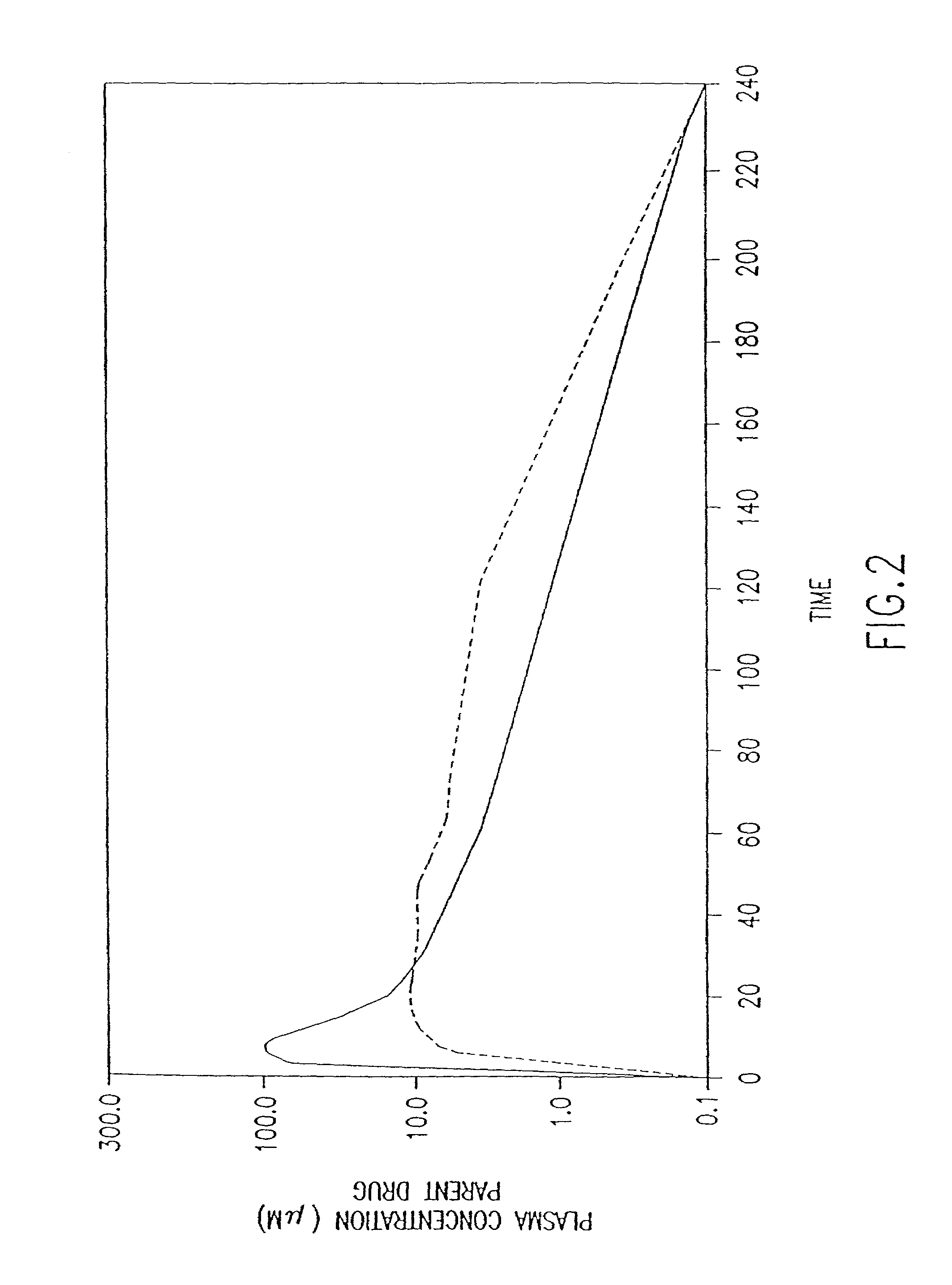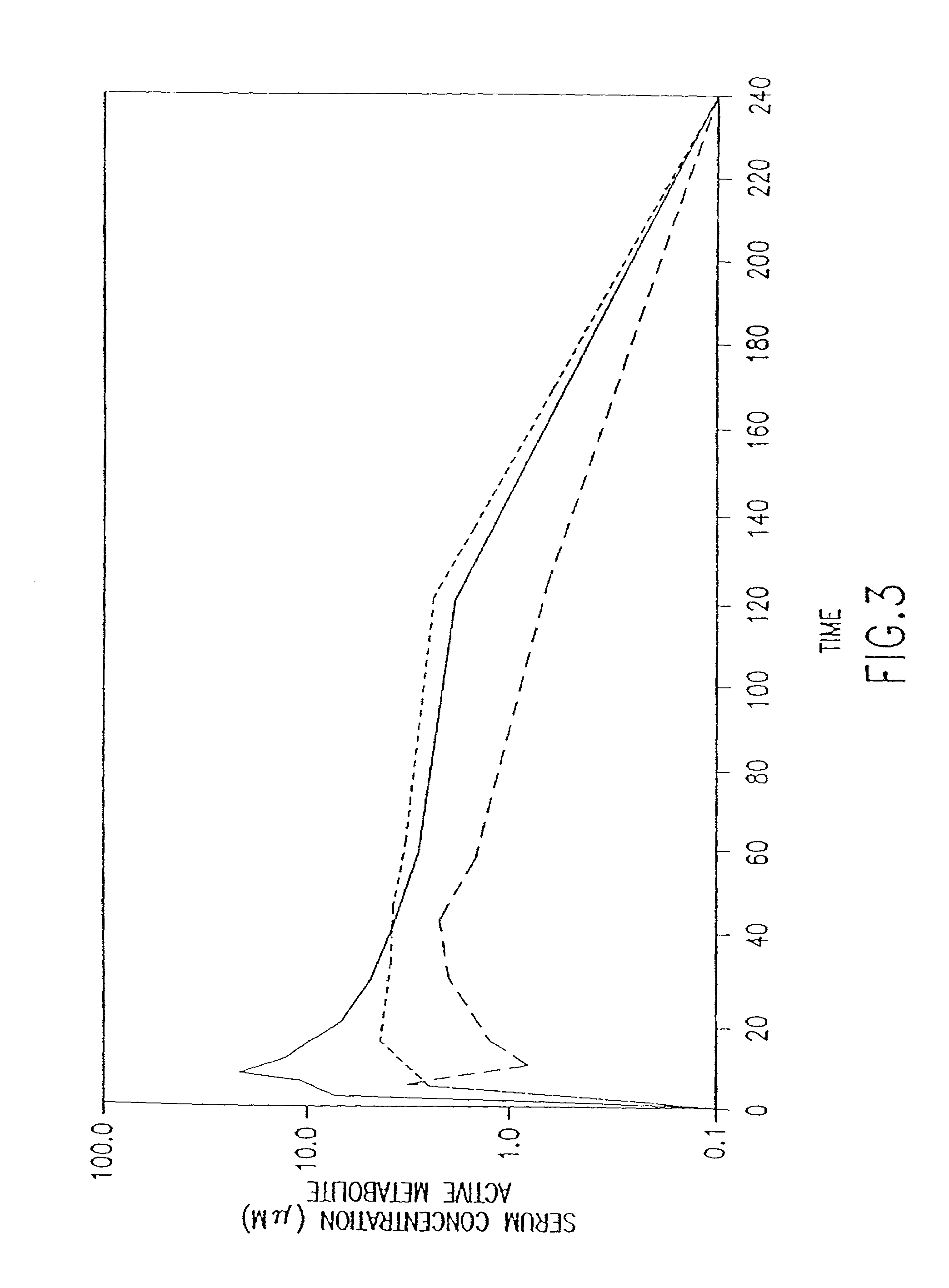Methods for the administration of amifostine and related compounds
a technology of amifostine and related compounds, which is applied in the direction of phosphorous compound active ingredients, antinoxious agents, nitro compound active ingredients, etc., can solve the problems of xerostomia or mucosa, nausea, vomiting, dose-dependent undesirable side effects of patients, etc., to reduce or decrease adverse or undesirable side effects suffered, prevent xerostomia or mucosa, and reduce serum calcium levels
- Summary
- Abstract
- Description
- Claims
- Application Information
AI Technical Summary
Benefits of technology
Problems solved by technology
Method used
Image
Examples
Embodiment Construction
[0022]The present invention provides methods of protecting against toxicities associated with anti-cancer therapies in a subject comprising subcutaneously administering to a subject in need thereof an effective amount of amifostine, WR-1065, or a combination thereof at least about 8 hours before the subject is exposed to ionizing radiation. Anti-cancer therapies include, but are not limited to, ionizing radiation therapy or chemotherapy, preferably, ionizing radiation therapy. As used herein, the term “subject” includes mammal, which includes human. The present invention also provides methods of administering amifostine and / or its metabolites to patients in a manner which decreases the undesirable side effects of the compounds as compared to conventional intravenous administration. The invention is based, in part, on the quite unexpected discovery that human patients receiving subcutaneously administered amifostine experienced significantly fewer incidences of nausea, vomiting, head...
PUM
| Property | Measurement | Unit |
|---|---|---|
| concentration | aaaaa | aaaaa |
| systolic blood pressure | aaaaa | aaaaa |
| volume | aaaaa | aaaaa |
Abstract
Description
Claims
Application Information
 Login to View More
Login to View More - R&D
- Intellectual Property
- Life Sciences
- Materials
- Tech Scout
- Unparalleled Data Quality
- Higher Quality Content
- 60% Fewer Hallucinations
Browse by: Latest US Patents, China's latest patents, Technical Efficacy Thesaurus, Application Domain, Technology Topic, Popular Technical Reports.
© 2025 PatSnap. All rights reserved.Legal|Privacy policy|Modern Slavery Act Transparency Statement|Sitemap|About US| Contact US: help@patsnap.com



